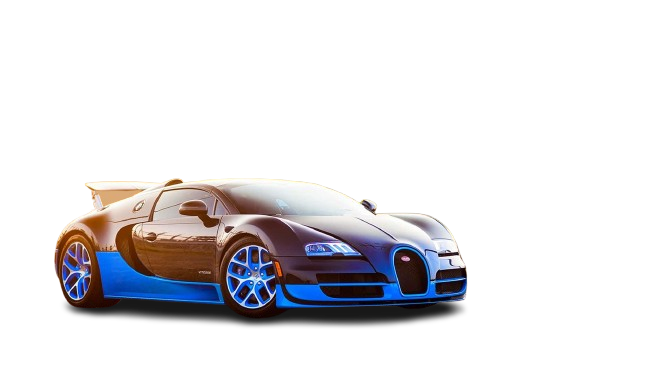
Super Cars
The Ultimate Experience of Speed, Power, and Luxury
Super cars have always held a unique place in the world of automobiles. Combining breathtaking speed, state-of-the-art technology, and exquisite design, these machines are engineered to provide an unmatched driving experience. Owning a super car is more than just possessing a vehicle—it’s about embracing an extraordinary lifestyle defined by power, performance, and prestige.
Whether it’s a Ferrari, Lamborghini, Bugatti, or McLaren, super cars have become cultural icons, representing the pinnacle of automotive engineering and design. For car enthusiasts, they are more than just fast—they’re the dream vehicles that embody a blend of speed, art, and luxury. In this blog, we’ll explore the fascinating world of super cars, including what makes them so special, their key features, and what sets them apart from other high-end vehicles. We’ll also cover some of the top models, the pros and cons of owning a super car, and answer some frequently asked questions.
What Makes Super Cars Special?
Super cars are not your average luxury vehicles. While luxury cars offer comfort and style, super cars push the limits of speed, power, and agility. Here’s what sets them apart:
Table of Contents
- Incredible Speed
Super cars are built for speed. With top speeds often exceeding 300 km/h, these vehicles are designed to provide adrenaline-pumping acceleration. Equipped with powerful engines, usually V8s or V12s, super cars can reach 0-100 km/h in under 3 seconds. Their engineering focuses on optimizing every aspect of speed and performance. - Exquisite Design
Each super car is a work of art, featuring sleek, aerodynamic designs that not only look stunning but also enhance performance. Every curve, line, and angle is crafted with precision to reduce drag and improve downforce, ensuring that these cars are as functional as they are beautiful. Interiors are equally luxurious, with premium materials like leather, carbon fiber, and Alcantara dominating the cabin. - Advanced Technology
From carbon-ceramic brakes to adaptive suspension systems, super cars are equipped with cutting-edge technology to provide an unparalleled driving experience. Many feature advanced aerodynamics, dynamic traction control systems, and even hybrid powertrains that blend performance with efficiency. - Exclusivity
Super cars are often produced in limited quantities, making them rare and exclusive. This exclusivity is a key aspect of their allure. Owning a super car not only gives you access to a high-performance machine but also places you in an elite group of automotive aficionados.
The Evolution of Super Cars
The concept of These Cars has evolved dramatically over the decades. The term itself first emerged in the 1960s with the introduction of cars like the Lamborghini Miura and the Ferrari 250 GTO. These early models set the benchmark for what would later become the super car category: high-performance, low-production, and exclusive vehicles that emphasized speed and luxury.
In the 1980s and 1990s, the super car world saw advancements in aerodynamics, materials, and technology. Cars like the McLaren F1 and the Ferrari F40 pushed the limits of what was possible, setting new records for speed and performance.
In recent years, super cars have gone even further. With the integration of hybrid technology and electric powertrains, today’s super cars, such as the Ferrari SF90 Stradale and Porsche 918 Spyder, offer both mind-blowing performance and improved efficiency. The future promises even more innovation, as manufacturers explore the potential of fully electric super cars like the Rimac Nevera.
Popular Super Cars of All Time
Here’s a look at some of the most iconic super cars that have shaped the industry:
Lamborghini Aventador
With its naturally aspirated V12 engine and jaw-dropping design, the Aventador is a classic in the super car world. Its performance is matched by its aggressive looks, making it a fan favorite.

Ferrari LaFerrari
This hybrid super car is a masterpiece of engineering, combining Ferrari’s signature V12 engine with an electric motor to deliver blistering speed and precision handling. It’s an excellent example of the future of super cars.

Bugatti Veyron
Once holding the title of the world’s fastest car, the Bugatti Veyron pushed the boundaries of what a car could achieve. With a top speed of over 400 km/h, it’s a true testament to engineering excellence.

McLaren P1
Another hybrid, the McLaren P1 is a perfect example of how modern super cars are blending traditional engines with electric motors to deliver both performance and sustainability. The P1 is known for its superior handling and futuristic design.

Porsche 911 Turbo S
While Porsche has produced many super cars over the years, the 911 Turbo S stands out for its balance between everyday usability and These Cars performance. It’s a car that can comfortably be driven daily while still delivering mind-blowing speed.

Pros and Cons of Owning a Super Car
Like any major purchase, owning a super car comes with its pros and cons. While these machines are undeniably impressive, they are not for everyone.
Pros:
- Performance
These Cars deliver performance that few other vehicles can match. With unparalleled speed, acceleration, and handling, they provide a driving experience unlike any other. - Exclusivity and Status
Owning a These Cars puts you in an elite club. These vehicles are rare, and their exclusivity adds to the sense of prestige that comes with ownership. - Investment Potential
These Cars cars, especially limited-edition models, can appreciate in value over time. While not guaranteed, a rare super car can become a valuable asset. - Cutting-Edge Technology
These Cars are often equipped with the latest technology, offering features like adaptive suspension, advanced traction control, and hybrid powertrains. These cars are at the forefront of automotive innovation. - Aesthetics
These Cars are undeniably beautiful. Their sleek designs turn heads wherever they go, and owning one is like possessing a piece of automotive art.
Cons:
- High Cost
These Cars come with a hefty price tag. Not only are they expensive to buy, but their maintenance, insurance, and fuel costs are also significantly higher than average vehicles. - Practicality
These Cars are not the most practical vehicles for everyday use. Many have low ground clearance, limited storage space, and uncomfortable interiors, making them unsuitable for long trips or regular commuting. - Maintenance
Super cars require specialized maintenance, and parts can be extremely costly. Frequent servicing is necessary to keep these machines in peak condition. - Fuel Efficiency
While hybrid and electric super cars are improving in this regard, most traditional super cars are notorious for their poor fuel efficiency.
Attention
Owning a super car attracts attention—sometimes unwanted. Whether it’s people taking photos or trying to race you at traffic lights, the constant attention can be overwhelming for some owners.
Conclusion
Represent the pinnacle of automotive performance and luxury. From their jaw-dropping speeds to their unparalleled design and craftsmanship, they offer an unmatched driving experience. Whether you’re a collector, an enthusiast, or someone who simply appreciates the finer things in life, super cars hold a unique place in the world of automobiles. While they come with a high cost and certain impracticalities, for many, the thrill and prestige of owning a super car make it all worthwhile.
FAQs
1. What defines a super car?
A is a high-performance, high-end vehicle that offers superior speed, handling, and design. They are often produced in limited numbers and come with a premium price tag.
2. How fast can super cars go?
Most can reach speeds well above 300 km/h. Some, like the Bugatti Chiron, can even exceed 400 km/h.
3. Are super cars only for racing?
No, while are built for speed and performance, they are often used as luxury vehicles for personal enjoyment. However, many super car owners do take them to racetracks to experience their full potential.
4. Are super cars fuel-efficient?
Generally, no. Traditional , with their large engines, are not fuel-efficient. However, hybrid and electric super cars are improving fuel efficiency without sacrificing performance.
5. How much does it cost to maintain a super car?
Maintaining can be quite expensive. Annual maintenance can range from thousands to tens of thousands of dollars, depending on the model and its specific needs.6. Can super cars be driven daily?
While it’s possible to drive a super car daily, it may not be practical. Super cars are often uncomfortable for long drives, have limited storage, and attract a lot of attention.





Pingback: Luxury Cars Under 20 Lakhs for the Indian Market